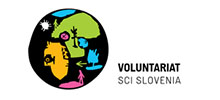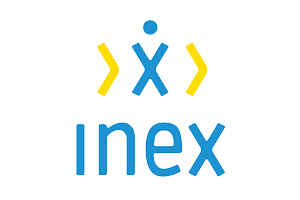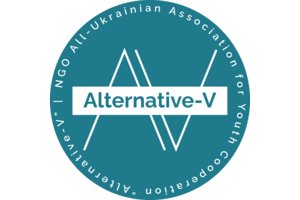How to reflect learning with your participants
At this chapter, we focus on how to prepare and realize reflection of learning for participants of your activities. It is useful, before you read this, to also read pages about competences, so you understand a bit more about learning in workcamps.
Always focus on your participants
What is the most important when preparing learning reflection? Always think about your target group.
Usually, the target group is diverse and often, they start from the beginning. If you work with participants on workcamps or youth exchanges, it’s very probable they have never heard anything about competences, therefore reflecting learning will be difficult for them - they won’t know what to reflect on. As we mentioned, they will probably formulate the hard competences they learnt, the foreign language communication and perhaps independence, but most other competences will stay hidden. What can you do?
Start from the beginning.
When you’re thinking about what to do with the participants (at workcamps for example), be aware that they are not on the same levels in knowledge and skills in the topics as you do. They might understand what workcamp is and they might not, they might know what is competence and how to reflect learning and they might not… Always start from getting info from them - what do they actually know already and build on it. If you don’t know their experience, or you think they are rather unexperienced, rather start from the very beginning than to skip the start and get half of the group lost. :)
This simple image shows, where we propose you to start with the input based on the level of experience of the participants with competences, learning reflection and volunteering as such.

Read more explanation for this graph
1. High level of campleader's input and low level of experience of the volunteers
- a. Explain what a workcamp is
- b. Explain what are competences
- c. Ask them to name competences
- d. Ask participants if they already have experiences with reflection activities
- e. Explain the purpose of the reflection activities
- f. Introduce IM-PROVE more in details and give them time to explore
2. Medium level of campleader's input and medium level of experience of the volunteers
- a. Ask them to name competecences
- b. Test their knowledge and comprehension of the word competence
- c. Explore their experience with reflection activities
3. Low level of input and high level of experience of the volunteers
- a. Ask them what type of competences they have developed most through workcamps
- b. What type of competence was the most difficult to develop?
- c. What would you change in your next workcamp?
- d. Ask them which reflection activity they already know
- e. Ask them to plan their own learning objectives for this workcamp
Tips and tricks how to reflect with your group
Of course, there are many tips and tricks that will help you prepare the learning reflection in your activities. Here, we pointed out some that hopefully will be most useful for you.
1. Don’t mix the reflection and evaluation
There is a difference between these two and it is important to know precisely which one you want to focus on during the particular activity.
During the reflection, people connect lessons learned from the activities with their world, reflecting on how they can use the learning experience in their own personal and professional lives. The main purpose of this is to add value to the experience. Reflection enables us to name our knowledge, skills, attitudes - competences, observe and become more aware on what and how we learn or behave in certain situations.
Evaluation is focused on something different - it helps us assess some features which are important. It contains questions as if you found the accommodation appropriate, how would you assess the campleaders or what did you learn and will use when you come home. Evaluation usually provides information to the organizers or the leaders, how the participants assess the project and what can be done differently next time.
2. Different learning styles - diverse methods
People learn in various ways. Somebody needs to hear things to realize and remember; others need to visualize it or talk to somebody to properly understand. Some people need books and resources to read about the thing and form their own opinion. Groups of participants on educational activities are always mixture of all these. It means that during activities and their reflection, it is advised to mix different methods to make sure most of the participants go through it and learn as much as they can. You can for example use sharing in pairs, metaphoric methods, individual reflection, learning diraries, artistic methods…
3. Ask good questions
Base of reflective activities is to ask the right questions, that will help the participant with reflecting their own experience. Questions open the door to dialogue and discovery. They are an invitation to creativity and breakthrough thinking. Questions can lead to movement and action on key issues; by generating creative insights, they can ignite change.
What makes a question powerful? It generates curiosity in the listener, stimulates reflective conversation, is thought-provoking, surfaces underlying assumptions, invites creativity and new possibilities, generates energy and forward movement, channels attention and focus inquiry, stays with participants, touches a deep meaning, evokes more questions. A powerful question also has the capacity to “travel well” - to spread beyond the place where it began into larger networks of conversations throughout an organisation or a community.
The advantage of questions before answer is, that questions lead to exploring and answers lead to closing. Close questions also close communication. These are yes/no questions. We try to avoid them. Sometimes they are appropriate but with more open questions we stimulate more reflective thinking in a deeper level of conversation.
Questions as Why?, How?, What? Are the ones that help a volunteer/participant to move forward, that provokes thoughtful exploration and evokes creative thinking.
When you ask a powerful question, it may happen that the questioned person will be quiet. A question can cause many things in a person, it can open a new door to which they don’t have an answer. Silence is a good sign, that the question started a process in a person, it means that a person is thinking about something. Try to be friends with the silence, don’t be afraid, this is also a part of a personal support.
It is also very possible that there is more than one answer to the question or that there is no real answer. That’s why a person start to explore. It does not need to find a solution or an action right away, and it is not necessary to offer an answer or solution to the person.
Source:Vogt, E., Brown, J., and Issacs, D. (2003). The Art of powerful questions: Catalyzing insight, innovation, and action. Whole Systems Associates: Mill Valley, CA.
4. Take the group into account
When considering the reflection tool, it is also important to take the size of your group into account. Some methods might work easily with 5 but worse with 15 participants. Also, if you have people in the group, who have rather lower communication level in English or any other language you use, select more simple methods with less speaking to reflect the learning. In this way, they will be more involved and will express more freely. Another option is that they work in groups in their own language, in order to have a deeper discussion.
5. Timing is important
It is also important to think about timing when you’re doing the activity. We suggest diversifying and changing the way you work throughout the process. At the start of the activity, it is good to do more work in a large group since the group building process is still very important in this stage; people are getting to know each other and finding their place in the group. On the other hand, working in small groups can create a greater feeling of security. Alternatively, you could combine the two. Towards the end of the activity it can be good to work more with individual reflection (for instance using the IM-PROVE app) since the participants are the ones who will have to transfer the lessons learned into their own context.
The timing of the learning reflections are the best at the end of each day, or at the start of each day. It can can also be less frequent, as every second day or just twice/three times during the project - depending on your group, priorities, possibilities, energy in the group…
6. Be careful of personal boundaries
Some issues can have a negative effect on the reflection and learning process, such as cultural sensitivity and personal boundaries. If you cross someone’s personal boundaries they might close themselves or get into a panic zone. Also, games where people drop out one after the other stop their active participation in the reflection process. To avoid these situations, we prepared list of activities for you to use with your volunteers/participants in the next chapter. :-)
Tip: A personal learning journal for short reflections could also be used for daily use in addition to other tools and methods. At the end of the day give volunteers/participants ten to fifteen minutes to reflect on what happened during the day. They can write the situations into the diaries and reflect on their learning from each of these situations. As it depends on their personal learning style it may happen some will never use it, but these can for instance take photos and at the end of the day, they can chose one that presents their learning moment of the day.
You can even include a short writing + meditation at the beginning of the day, where participants take time to look ahead and prepare for the day ahead. This and many more methods you can find in the next chapter.
All info at once
You can also read all important information about learning and reflection in volunteering projects in one handbook. Download here!













